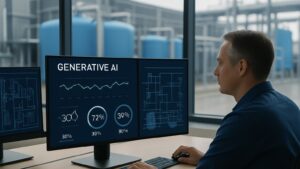Did you know scope 3 emissions make up 65-90% of a company’s carbon footprint? It makes it crucial to comprehend Scope 3 emission hotspots to intervene effectively in the current sustainability initiatives. These emissions show the indirect effects on the environment of a company’s value chain. It includes the consumption of products by consumers, business travel, and purchases of items. Determining the locations where these emissions are most concentrated and significant is the first step in determining priority areas for action.
For companies to concentrate their efforts on the areas where they can reduce emissions the most, this analysis is essential. Businesses can greatly contribute to global climate objectives and improve their environmental performance by strategically focusing on these areas. This article will provide a detailed analysis of scope 3 emission hotspots and intervention techniques. So, let’s dive in.
Scope 3 Emission Hotspots: Impact of Consumer Behavior
A company’s downstream Scope 3 carbon emissions can be greatly impacted by the actions and customs of its end users. It is essential to comprehend how product usage patterns, disposal methods, and lifestyle decisions affect carbon emissions. It helps to create focused campaigns that empower and include people in the decarbonization process.
Analyzing Product Usage Emissions
When combined with comprehensive customer research, a company’s product carbon footprint may provide information on emissions. This info is related to energy usage, replacement, and maintenance cycles. Furthermore, decisions on designing products may be made using this knowledge. It increases energy efficiency, encourages longer lifespans, and supports sustainable user behaviors.
Evaluating End-of-Life Emissions
The end-of-life and product disposal practices of a business can be the source of Scope 3 carbon emissions. Landfilling, recycling, and reuse are all included. Moreover, a corporation may increase circularity and reduce its environmental effect by designing strategies. These have to be grounded on a study of the carbon footprints associated with different product end-of-life situations.
Engaging Consumers through Sustainability Initiatives
A company’s downstream emissions can be considerably reduced by engaging and educating customers. It helps to embrace more environmentally friendly consumption and disposal practices. This can include delivering product-as-a-service models. It can also include clearly labeling products about their carbon footprint or working with clients. This is to support circular economy initiatives like product take-back and refurbishing programs.
Leveraging Behavioral Science Insights
Making use of the most latest research in behavioral science and psychology can assist firms design more successful customer engagement strategies. Moreover, organizations can create interventions that promote sustainable choices and habits. This is by comprehending the cognitive biases, societal norms, and motivating elements that impact customer behavior.
Partnering with Consumers for Co-creation
Engaging clients in the sustainability and product development process can lead to deeper emotional connections. It can also provide more innovative solutions. Additionally, co-creation initiatives can provide more meaningful and durable outcomes. It brings together customers and companies to create, test, and refine products and services
Geographic Variations in Scope 3 Emission Hotspots and Strategies for Intervention
The relative importance and nature of Scope 3 emission hotspots can vary significantly across different geographic regions and markets. Understanding these regional nuances is essential for developing effective, localized intervention strategies.
Analyzing Regional Emission Profiles
Analysing Scope 3 emissions in detail across several nations, states, or localities can highlight unique trends and objectives. Regionally-specific Scope 3 emission hotspots can be caused by a variety of factors. It includes energy mixes and waste management systems. It also includes transportation infrastructure and consumer preferences. This is one of the most powerful ways to reduce scope 3 carbon emissions after identification.
Tailoring Mitigation Strategies to Local Contexts
Once organizations have a comprehensive grasp of the regional Scope 3 emission profiles, they can formulate focused intervention plans. It should cater to the distinct problems and possibilities present in each local market. Moreover, this can entail customizing supplier interactions. It can also include consumer education programs or product designs. It helps to fit the unique cultural, legal, and also environmental settings.
Leveraging Regional Partnerships and Collaborations
Region-specific solutions for Scope 3 emission reductions can be unlocked. This is by forming strategic alliances with local stakeholders. It includes vendors, trade groups, legislators, and community organizations. Furthermore, these cooperative projects can assist businesses in navigating intricate local dynamics. They can also help in gaining access to specialized knowledge and putting more effective decarbonization measures into action.
Aligning with Regional Sustainability Frameworks
The efficacy and legitimacy of a company’s endeavors can enhance by harmonizing Scope 3 emission reduction programs. This is with the current regional sustainability frameworks, norms, and legislation. So, this can entail abiding by regional carbon price plans and ethical purchasing guidelines. It can also entail industry-specific emissions reporting standards.
Scaling Successful Regional Interventions
Companies can investigate the potential to expand successful tactics throughout their worldwide operations. They can also build on the knowledge and lessons gained from regional Scope 3 emission reduction projects. Additionally, cross-pollination of best practices can facilitate localized adjustments. This is while promoting steady progress toward decarbonization targets.
Technological Innovation and Data-Driven Approaches for Scope 3 Emission Management
Finding Scope 3 emission hotspots, assessing mitigation options, and monitoring advancement all depend on precise data gathering, monitoring, and analysis. So, using data-driven strategies and cutting-edge technologies can greatly improve a business’s capacity to regulate Scope 3 carbon emissions.
Automated Scope 3 Data Collection and Reporting
The gathering, compilation, and reporting of Scope 3 emissions data can be automated. This is with the use of IoT sensors, blockchain, and AI-powered analytics. It helps to overcome frequent issues with data availability and dependability. Furthermore, businesses can expedite their sustainability disclosures. They can also obtain a more thorough picture of their value chain emissions by incorporating these tools.
Advanced Modeling and Simulation for Optimization
Companies can simulate complicated, cross-functional situations. They can also optimize their actions, and evaluate the possible effects of various emission reduction techniques. This is with the use of sophisticated simulation and modeling tools. Additionally, these tools can help with well-informed decision-making and expedite the adoption of significant policies. They can also monitor the advancement of emissions objectives.
Innovative Technological Solutions for Emission Reduction
New technologies that are built into a business’s operations and value chain can directly help reduce Scope 3 emissions. It includes carbon capture and storage, renewable energy systems, and sustainable transportation solutions. Moreover, organizations can reduce scope 3 carbon emissions from energy consumption, transportation, and more with this.
Data Collaboration and Interoperability
Scope 3 emissions control can improve even further. This is by encouraging data exchange and interoperability between value chain participants. Moreover, companies can coordinate their decarbonization activities and have a more thorough picture of their Scope 3 impact. This is done by building common technology platforms, exchanging emissions data, and also coordinating data standards.
Upskilling and Capacity Building for Emissions-Tracking
Sustaining progress requires providing internal teams and external stakeholders with the skills and information. This is in requirement to gather, process, and evaluate Scope 3 emissions data. Moreover, businesses should make investments in resources, equipment, and training. It increases the skills of their suppliers and staff.
To Sum Up
Scope 3 emission hotspots are extremely essential to follow. It helps to come in line with the sustainability goals of a region. It demands some creative strategies and an in-depth study of different aspects. This article covers all of these elements to help you start your journey toward sustainability.
Furthermore, if you want to learn rare insights from industry leaders, the 2nd Scope 3 Emission Reduction Summit in Berlin, Germany on April 18-19, 2024 is just for you. It features several sessions, case studies, networking opportunities, and more. It will help organizations maximize profits while focusing on minimal environmental impact. So, know more and register right away!





